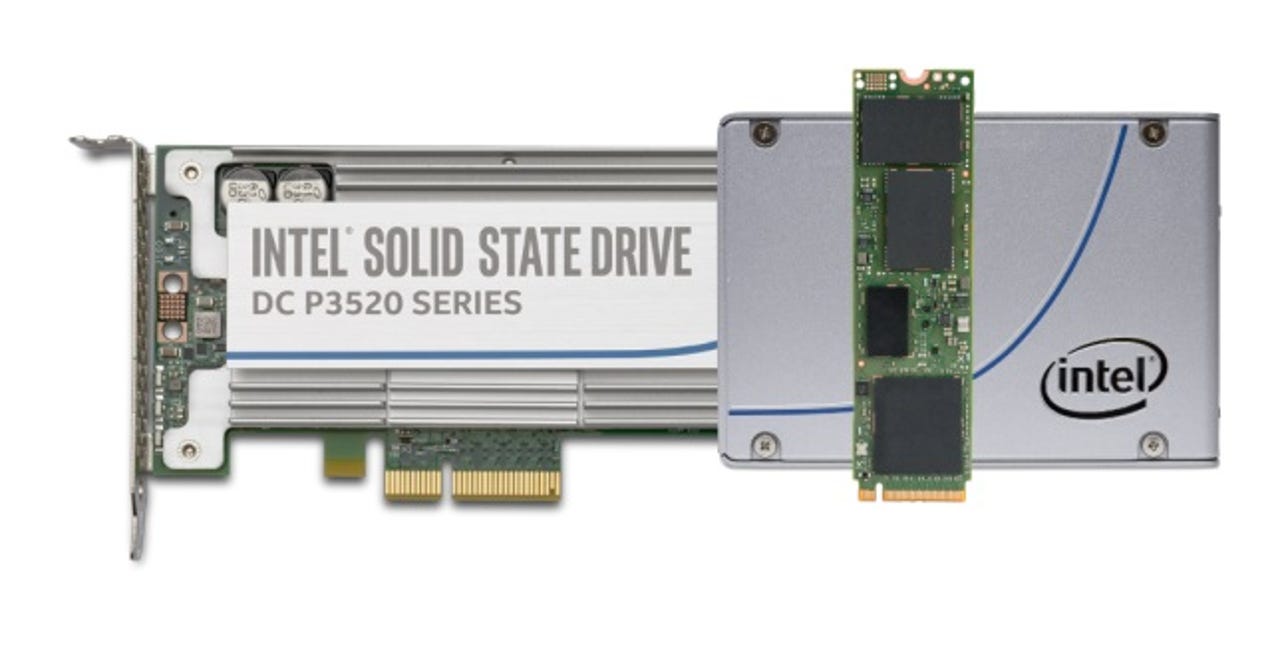Intel delivers new 3D NAND SSDs for PCs, data centers, Internet of Things


Intel's DC P3520 SSD for data centers with 3D NAND technology
3D NAND technology -- which allows cells to be stacked vertically, improving density and increasing capacity in smaller confines -- has quickly moved from the cutting-edge of solid-state storage to an increasingly mainstream feature of new drives. Samsung is using it in the mega-capacity SSDs it recently announced, and Intel has just unveiled a half-dozen new drive series that utilize the technology.
The new drives span across application types, with a pair for consumer and business PCs, two for data centers, and even a duo for Internet of Things (IoT) devices. Most of them use the PCIe interface for speedier data transfers, though a couple of them make use of the slower SATA interface. The SSD 600p and Pro 6000p Series are designed for consumer and business desktop and laptop PCs, respectively, both using PCIe to deliver what Intel claims is 17 times the performance of traditional hard drives and three times the speeds of SATA solid-state drives.
Both new client lineups are offered in 128GB, 256GB, 512GB, and 1,024GB capacities,with similar specs: the tiny M.2 form factor and the exact same random and sequential read/write speeds. The Pro series is designed to be used with Intel's vPro enterprise processors, featuring Remote Secure Erase Solution technology to allow IT professionals to wipe drives clean from a remote location. The 600p SSDs are already showing up at online retailers, with the 128GB model coming in at an affordable $70 price point.
The data center drives consist of the SSD DC P3520 and SSD DC S3520 Series. Intel says the former is well-suited for cloud computing services, with sequential read speeds as high as 1,700MB/s. P3520 drives will be available in capacities ranging from 450GB to 2TB in a 2.5-inch form factor or 1.2TB or 2TB capacities in a half-height half-length add-in card. On the other hand, the DC S3520 makes use of the SATA interface instead of PCIe, and the chip giant says it is ideal for transitioning from SATA enterprise hard drives. S3520 drives will be available in a large number of capacities from 150GB up to 1.6TB, though maximum sequential read speeds top out at 450MB/s.
Finally, as part of Intel's effort to lessen its reliance on the PC as its primary profit source, it's rolling out two SSDs that can be used by IoT devices. As its name suggests, the SSD E 6000p Series is similar to the business PC version, though it only comes in 128GB and 256GB capacities for IoT applications like digital signage and point-of-sale systems. The SSD E 5420s is the other new 3D NAND drive series using the SATA interface, coming as a 2.5-inch drive in 240GB capacity or a M.2 SSD in 150GB. (The larger drive has speeds nearly double its smaller sibling.) The E 6000p drives feature AES 256-bit self-encryption, which is useful for applications like ATM machines.